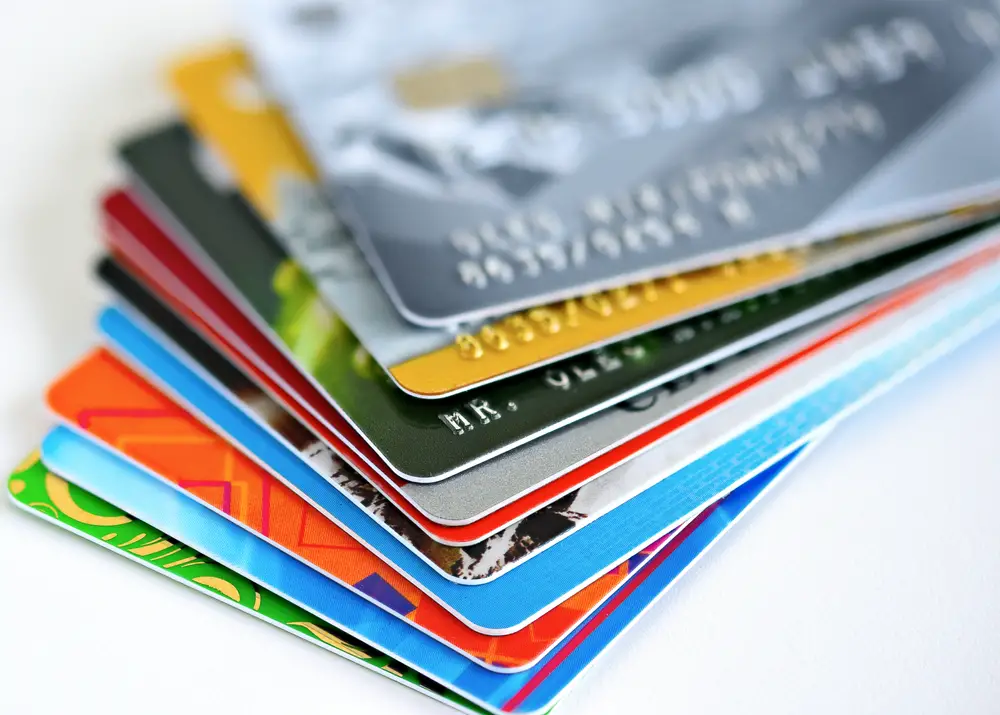The American Bankers Association (ABA) has completed a new study of credit cards based on data from nearly 16 million customers who have at least one active credit card. Personal information was removed from the data before it was made available to researchers. Banks, of course, are major issuers of credit cards.
 The ABA reported that approximately 76% of American consumers have at least one credit card.
The ABA reported that approximately 76% of American consumers have at least one credit card.
It found that the average number of cards per customer increases with income and those consumers with high subprime to low prime risk scores hold more credit cards than do people in different risk categories. Subprime credit scores are classified as those below 680, prime scores are those between 680 and 779, and super-prime scores are those 780 and above.
The study found credit card users spend significantly more than those who pay in cash. The ABA said that when merchants accept credit cards, they typically see increases in the size of transactions. The study also cited data from 2019 showing that the average credit card transaction was three times higher than the average cash transaction and 1.5 times higher than the average debit card transaction.
The ABA study also cited retail industry data indicating that accepting cards, especially those that offer rewards to consumers, saves merchants costs of handling cash transactions that can average 9.1% of the transaction’s value. It described those cash costs as including counting, storing, protecting, other handling costs and theft risk. It said the cash costs for bars and restaurants can hit 15% of transaction value.
Merchants pay a fee to the entities involved in processing credit and debit card transactions, the merchant”™s own bank, the credit card network and the bank that issued the card. In addition to the fees of 2.19% to 2.26%, there is an interchange fee of 1.6% of the purchase value, according to the ABA study.
“Some have argued that the costs of card acceptance (including interchange) cause merchants to raise prices on consumer goods and services, effectively ”˜passing through”™ the cost of fees to consumers,” the ABA study said. “Even after accounting for the cost of acceptance, credit cards provide a net benefit of 5% to 6.4% of the purchase value to merchants.”
The ABA found that credit cards that offer rewards are especially popular with consumers and cited a Federal Reserve estimate that 84% of cardholders have at least one rewards card. It said that other data indicated 77% of lower-income cardholders had at least one rewards card and that 75% had redeemed a reward during a 12-month period.
The ABA pointed out that most rewards cards are structured to give consumers points, cash back, or other incentives as a percentage of their total credit card spending. That, of course, means higher spending generally leads to higher rewards and higher consumer spending leads to higher income for merchants.
The ABA study also looked at data concerning people who pay off their card balances each billing period and those who don”™t. It found that lower-income customers with high credit scores have the lowest average revolving balance at $823. The highest-income customers with high subprime to low prime (620-730) risk scores had the highest average revolving balance of $13,500.
“This finding is not unexpected,” said the ABA. “Consumers with more money tend to spend more and thus revolve higher balances, but it provides further evidence against the notion that lower-income individuals face high interest charges while higher-income consumers do not.”
The study found that about 40% of all cardholders had an unpaid balance at the end of the monthly billing period. While cardholders with annual household incomes below $50,000 made up 15% of the study sample, they paid just 13% of the total monthly interest. Cardholders who earned more than $75,000 a year made up 67% of the sample but paid 70% of the interest.
“While ABA encourages cardholders to pay balances in full each month, the flexibility to make a purchase on credit and pay it off over time is valuable to many consumers,” the study said.
It pointed out that by allowing cardholders to pay off only part of the balance at the end of each billing period, independent and bank-affiliated card issuers “took the burden of nonpayment risk away from merchants: if a customer pays a retailer via a credit card, the retailer receives the payment promptly ”” regardless of whether the customer ever pays the card issuer the balance owed.”






















